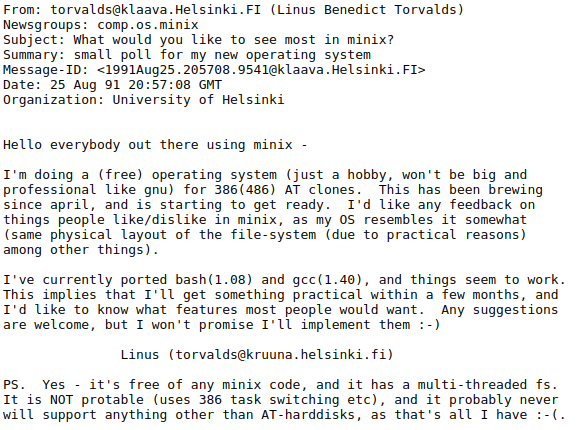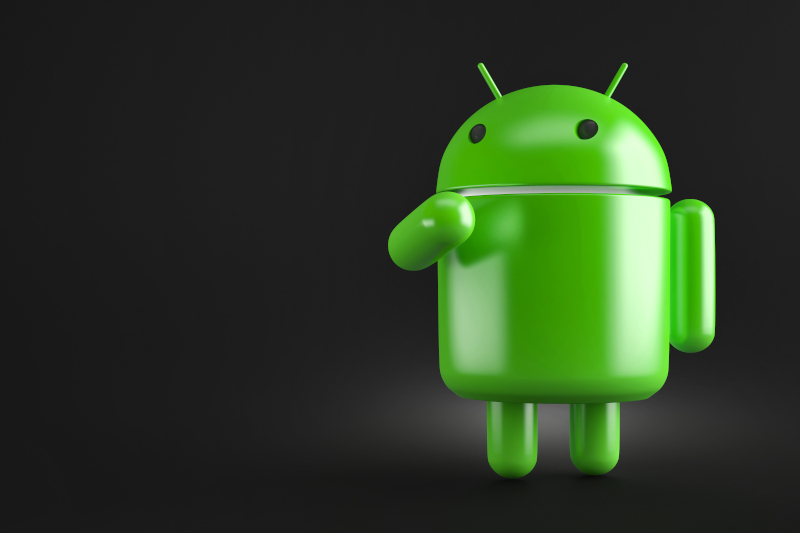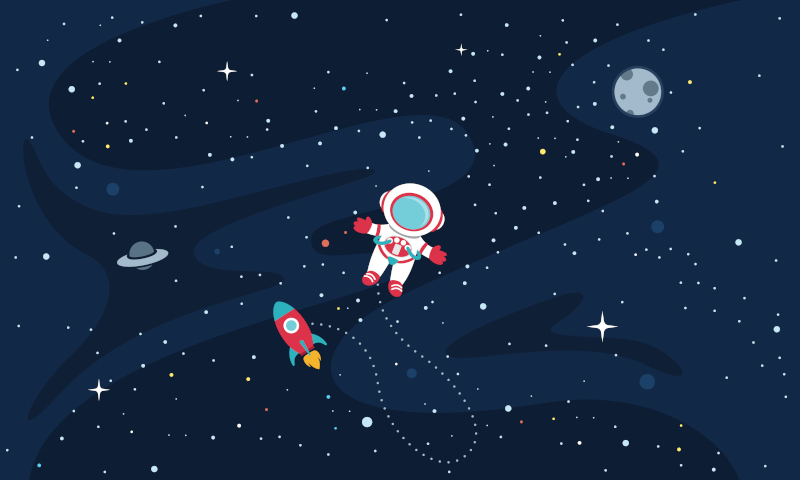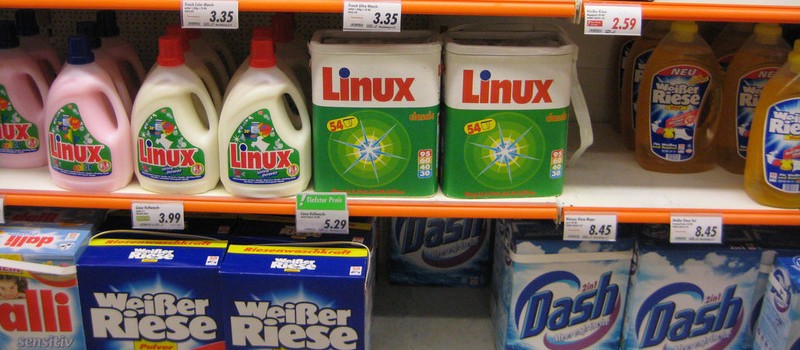Starting with some fun facts: If you did not know already, Linux has two birthdays each year.
On 25th August 1991, 21 years old Finnish computer science student Linus Torvalds sent a mail announcing that he was working on a new operating system which was ‘just a hobby, won’t be big and professional’.

On 5th October 1991, he released the first Linux Kernel. Needless to say, this “little hobby project” has changed the world of computing.
Over the years, the Linux community has often been confused over which of the two days should be considered as the birthday of Linux. And thus we end up having two birthdays for Linux.
On this birthday of Linux Kernel, I am going to list out some interesting facts about Linux that would certainly amaze you.
30 Interesting Facts about Linux
- The first Linux Kernel, version 0.01, had just 10,239 lines of code (Source: Wikipedia)
- The Linux Kernel has crossed one million code commits (Source: GitHub Mirror)
- Linux Kernel today has more than 27 million lines of code as of 2020. (Source: The Register)
- The most popular programming language used for the Linux Kernel is C, with nearly 98% of code written in C. (Source: GitHub mirror)
- There are 276 active Linux distributions as per the information available in Distrowatch (there could be even more!)
- Did you know that Android is built on top of Linux Kernel? Even if it is heavily modified, Android functions because Linux exists.

- Today, over 80% of Linux contributions come from developers paid by big enterprises. Intel tops the list of contributors for most of the Linux Kernel releases. However, you will also notice contributions by Huawei, AMD, NVIDIA, Red Hat, Google, Samsung, SUSE and many other companies like Facebook.
- Though it was Linus Torvalds who wrote the Linux Kernel initially, he hardly codes anything today. However, he is actively responsible for managing and merging codes written by other developers.
- Majority of websites that you visit on the Internet run on Linux-based server.

- While not an enormous number, as of October 2021, Linux as a desktop OS has a market share of 2.35%.
- Even though Linux may not be the most preferred desktop choice, it is a popular choice for developers/programmers worldwide. Hence, Microsoft introduced Windows Subsystem for Linux to let Windows users easily access Linux tools without dual booting.
- Linus Torvalds wanted to name the project Freax (combination of free and Unix) but his colleague had created an FTP server named Linux (combination of Linus and Unix) for the project already. So, the project continued to be called Linux.

- Space programs by NASA, SpaceX, and many other space agencies rely on Linux.
- The International Space Station runs Linux since 2013.
- First GUI that ran on Linux was X Window System. It ran on Linux Kernel version 0.95.
- MCC Interim Linux was the first Linux distribution available for public download in February 1992. It was based entirely on the command line.
- Created in 1993, Slackware is the one of the oldest Linux distribution which is still in development.
- Linux kernel started using GPL license from version 0.12. Initial license forbade any commercial usage.
- On 15 August 1994, William R. Della Croce, Jr. filed for the trademark Linux, and then demanded royalties from Linux distributors. After court battles, Linus Torvalds got the trademark rights back in 1997.
- Linux is used as a product name to describe a furnace by a Denmark-based company. (Source: Varde)
- Linux is a genuine washing powder brand in Switzerland.

- Linux runs on 100% of world’s top 500 supercomputers.
- Commercial Linux enterprise Red Hat is perhaps the first billion dollar open source company.
- Microsoft CEO Steve Ballmer once called Linux cancer. In 2016, Microsoft created its own Linux distribution and have been showing appreciation for Linux as a platform since then.
- America’s NSA had approached Linus Torvalds in order to create backdoors in Linux Kernel. Linus said no this ‘request’.
- Linux-based operating systems support a wide range of architecture/computing platforms, unlike any other operating system.
- The Linux Kernel was the first OS kernel to support x86-64 in 2001.
- Linux isn’t just used on Earth. To get insights of life on Mars, a crucial mission was planned by NASA in 2020 where the robotic helicopter that accompanies the rover on Mars runs on Linux. Essentially, Linux landed on Mars and is flying as you read this.
- Linux was the first desktop operating system that introduced USB 3.0 drivers.
- Linux is the largest software project on the planet, where a huge number of developers and companies collaborate remotely.

